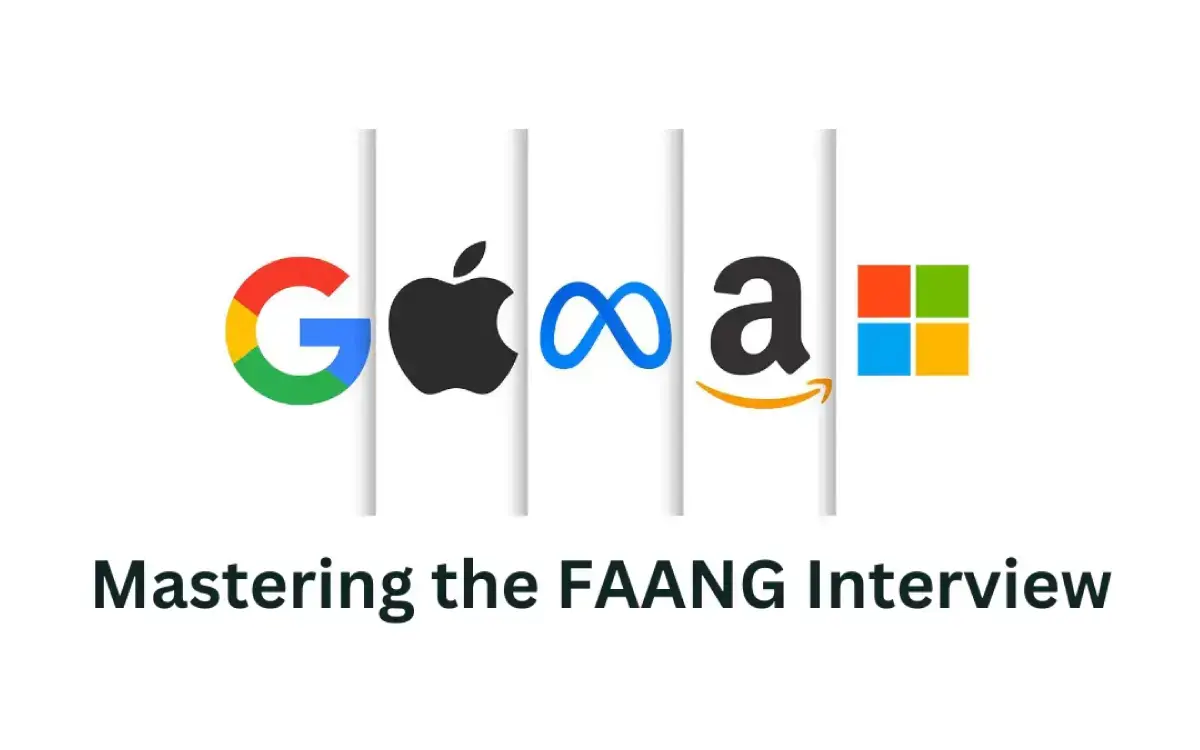1. Introduction
If you’re a software engineer or data scientist aiming to land a Machine Learning (ML) role at LinkedIn, you’re probably wondering: What does it take to crack their interview? With LinkedIn being a leader in leveraging ML for everything from recommendation systems to natural language processing (NLP), their interview process is as rigorous as it gets. But don’t worry—we’ve got your back.
At InterviewNode, we’ve helped countless engineers prepare for ML interviews at top companies, and we’ve noticed a pattern: LinkedIn’s ML interviews often revolve around a core set of questions. In this blog, we’ll break down the top 25 frequently asked questions in LinkedIn ML interviews, complete with detailed answers and pro tips to help you stand out.
Whether you’re brushing up on ML fundamentals, diving deep into NLP, or preparing for system design, this guide will equip you with everything you need to ace your LinkedIn ML interview. Let’s get started!
2. Understanding LinkedIn’s ML Interview Process
Before diving into the questions, it’s crucial to understand LinkedIn’s ML interview process. Knowing what to expect can help you tailor your preparation and approach each stage with confidence.
What Does LinkedIn’s ML Team Do?
LinkedIn’s ML team works on some of the most impactful projects in the tech industry. From powering the “People You May Know” feature to optimizing job recommendations and enhancing search algorithms, LinkedIn relies heavily on ML to deliver a personalized user experience. This means their interviews are designed to assess not just your technical skills but also your ability to apply ML to real-world problems.
LinkedIn’s ML Interview Stages
Phone Screen: A 45-minute technical interview focusing on ML fundamentals, coding, and problem-solving.
Technical Rounds: 3-4 rounds covering ML theory, coding, and system design.
Behavioral Round: A discussion about your past experiences, teamwork, and alignment with LinkedIn’s values.
Hiring Manager Round: A deep dive into your technical expertise and how you’d contribute to LinkedIn’s ML projects.
What LinkedIn Looks For in ML Candidates
LinkedIn seeks candidates who:
Have a strong grasp of ML fundamentals (e.g., supervised/unsupervised learning, model evaluation).
Can code efficiently and solve algorithmic problems.
Understand system design principles for scalable ML systems.
Possess excellent communication skills to explain complex concepts clearly.
Align with LinkedIn’s values of collaboration and innovation.
Now that you know what to expect, let’s dive into the top 25 questions LinkedIn asks in their ML interviews.
3. Top 25 Frequently Asked Questions in LinkedIn ML Interviews
To make this section easy to navigate, we’ve categorized the questions into 8 key areas. Each question includes:
Why It’s Asked: The intent behind the question.
Detailed Answer: A comprehensive explanation with examples, code snippets, and diagrams where applicable.
Pro Tips: Actionable advice to help you ace the question.
Category 1: Machine Learning Fundamentals
Question 1: What is the bias-variance tradeoff, and how do you manage it?
Why It’s Asked: This question tests your understanding of a core ML concept and your ability to balance model complexity.
Detailed Answer:The bias-variance tradeoff is a fundamental concept in ML that deals with the tradeoff between two sources of error:
Bias: Error due to overly simplistic assumptions in the learning algorithm. High bias can cause underfitting.
Variance: Error due to the model’s sensitivity to small fluctuations in the training set. High variance can cause overfitting.
How to Manage It:
Reduce Bias: Use more complex models (e.g., deeper neural networks) or add more features.
Reduce Variance: Use regularization techniques (e.g., L1/L2 regularization) or gather more training data.
Pro Tip: Always explain how you’d diagnose bias/variance issues in practice (e.g., by analyzing learning curves).
Question 2: How do you handle missing data in a dataset?
Why It’s Asked: This question assesses your practical data preprocessing skills.
Detailed Answer:Handling missing data is crucial for building robust ML models. Common techniques include:
Remove Missing Data: Drop rows or columns with missing values (if the dataset is large enough).
Imputation:
For numerical data: Use mean, median, or regression-based imputation.
For categorical data: Use mode or a placeholder like “Unknown.”
Advanced Techniques: Use algorithms like K-Nearest Neighbors (KNN) or deep learning models to predict missing values.
Pro Tip: Always consider the context of the data. For example, in time-series data, forward/backward filling might be more appropriate.
Question 3: What is regularization, and why is it important?
Why It’s Asked: This question evaluates your understanding of overfitting and model generalization.
Detailed Answer:Regularization is a technique used to prevent overfitting by adding a penalty for larger coefficients in the model. Common types include:
L1 Regularization (Lasso): Adds the absolute value of coefficients as a penalty.
L2 Regularization (Ridge): Adds the squared value of coefficients as a penalty.
Pro Tip: Mention how regularization can also be used for feature selection (e.g., Lasso shrinks less important features to zero).
Question 4: Explain the difference between bagging and boosting.
Why It’s Asked: This question tests your knowledge of ensemble learning techniques.
Detailed Answer:
Bagging: Trains multiple models independently on random subsets of the data and averages their predictions (e.g., Random Forest).
Boosting: Trains models sequentially, with each model correcting the errors of the previous one (e.g., AdaBoost, Gradient Boosting).
Pro Tip: Highlight how bagging reduces variance, while boosting reduces bias.
Question 5: How do you evaluate a classification model?
Why It’s Asked: This question assesses your understanding of model evaluation metrics.
Detailed Answer:Common evaluation metrics for classification models include:
Accuracy: (TP + TN) / (TP + TN + FP + FN)
Precision: TP / (TP + FP)
Recall: TP / (TP + FN)
F1-Score: 2 (Precision Recall) / (Precision + Recall)
Pro Tip: Always choose metrics based on the business context (e.g., recall is more important for fraud detection).
Category 2: Deep Learning
Question 6: Explain the difference between CNNs and RNNs. When would you use each?
Why It’s Asked: This question evaluates your understanding of deep learning architectures and their applications.
Detailed Answer:
CNNs (Convolutional Neural Networks): Designed for grid-like data (e.g., images). They use convolutional layers to extract spatial features.
RNNs (Recurrent Neural Networks): Designed for sequential data (e.g., text, time series). They use recurrent layers to capture temporal dependencies.
When to Use:
Use CNNs for image classification, object detection, etc.
Use RNNs (or their variants like LSTMs/GRUs) for text generation, sentiment analysis, etc.
Pro Tip: Mention modern alternatives like Transformers for NLP tasks, as they’ve largely replaced RNNs in many applications.
Question 7: What is backpropagation, and how does it work?
Why It’s Asked: This question tests your understanding of how neural networks learn.
Detailed Answer:Backpropagation is the process of updating the weights of a neural network by propagating the error backward through the network. Steps include:
Forward Pass: Compute the output and calculate the loss.
Backward Pass: Compute gradients using the chain rule and update weights.
Pro Tip: Explain how gradient vanishing/exploding can occur and how techniques like batch normalization help.
Question 8: What is dropout, and why is it used?
Why It’s Asked: This question assesses your knowledge of regularization in deep learning.
Detailed Answer:Dropout is a regularization technique where random neurons are “dropped out” during training to prevent overfitting. It forces the network to learn redundant representations.
Pro Tip: Mention that dropout is typically not used during inference.
Question 9: How does a Transformer model work?
Why It’s Asked: This question evaluates your understanding of modern NLP architectures.
Detailed Answer:Transformers use self-attention mechanisms to process input sequences in parallel, making them more efficient than RNNs. Key components include:
Self-Attention: Computes attention scores between all words in a sequence.
Positional Encoding: Adds information about word positions.
Pro Tip: Highlight how Transformers revolutionized NLP with models like BERT and GPT.
Question 10: What is transfer learning, and how is it used in deep learning?
Why It’s Asked: This question tests your knowledge of leveraging pre-trained models.
Detailed Answer:Transfer learning involves using a pre-trained model (e.g., ResNet, BERT) as a starting point for a new task. Steps include:
Fine-Tuning: Adjust the pre-trained model’s weights on a new dataset.
Feature Extraction: Use the pre-trained model as a fixed feature extractor.
Pro Tip: Mention how transfer learning reduces the need for large datasets.
Category 3: Natural Language Processing (NLP)
Question 11: How would you build a sentiment analysis model?
Why It’s Asked: This question tests your ability to design and implement an NLP solution.
Detailed Answer:
Data Collection: Gather labeled text data (e.g., tweets with positive/negative labels).
Preprocessing: Tokenize text, remove stopwords, and apply stemming/lemmatization.
Feature Extraction: Use techniques like TF-IDF or word embeddings (e.g., Word2Vec, GloVe).
Model Selection: Train a classifier (e.g., Logistic Regression, LSTM, or BERT).
Evaluation: Use metrics like accuracy, precision, recall, and F1-score.
Pro Tip: Highlight the importance of using pre-trained models like BERT for state-of-the-art performance.
Question 12: What is word2vec, and how does it work?
Why It’s Asked: This question evaluates your understanding of word embeddings.
Detailed Answer:Word2Vec is a technique to create word embeddings using shallow neural networks. It has two variants:
CBOW (Continuous Bag of Words): Predicts a word given its context.
Skip-Gram: Predicts the context given a word.
Pro Tip: Mention how word2vec captures semantic relationships (e.g., king - man + woman = queen).
Question 13: How do you handle imbalanced text data in NLP?
Why It’s Asked: This question assesses your ability to handle real-world NLP challenges.
Detailed Answer:Techniques include:
Resampling: Oversample minority classes or undersample majority classes.
Data Augmentation: Use techniques like synonym replacement or back-translation.
Class Weights: Adjust class weights in the loss function.
Pro Tip: Highlight the importance of using metrics like F1-score for imbalanced datasets.
Question 14: What is attention mechanism, and why is it important?
Why It’s Asked: This question tests your understanding of modern NLP techniques.
Detailed Answer:The attention mechanism allows a model to focus on specific parts of the input sequence, improving performance in tasks like translation. It’s a key component of Transformer models.
Pro Tip: Explain how self-attention differs from traditional attention.
Question 15: How would you detect plagiarism in text data?
Why It’s Asked: This question evaluates your ability to apply NLP to real-world problems.
Detailed Answer:
Preprocessing: Tokenize and normalize text.
Feature Extraction: Use techniques like TF-IDF or word embeddings.
Similarity Measurement: Compute cosine similarity between documents.
Thresholding: Flag documents with similarity scores above a threshold.
Pro Tip: Mention advanced techniques like using BERT for semantic similarity.
Category 4: Recommendation Systems
Question 16: How would you design a recommendation system for LinkedIn’s “People You May Know” feature?
Why It’s Asked: This question assesses your ability to design scalable ML systems.
Detailed Answer:
Data Collection: Gather user data (e.g., connections, profile views, shared interests).
Feature Engineering: Create features like common connections, mutual interests, and geographic proximity.
Model Selection: Use collaborative filtering (user-user or item-item) or matrix factorization techniques.
Scalability: Implement the system using distributed computing frameworks like Apache Spark.
Evaluation: Measure performance using metrics like precision@k and recall@k.
Pro Tip: Mention how you’d handle cold-start problems (e.g., using content-based filtering for new users).
Question 17: What is collaborative filtering, and how does it work?
Why It’s Asked: This question tests your understanding of recommendation algorithms.
Detailed Answer:Collaborative filtering predicts user preferences based on the preferences of similar users. It can be:
User-User: Find similar users and recommend items they liked.
Item-Item: Find similar items and recommend them to users.
Pro Tip: Highlight the limitations of collaborative filtering (e.g., cold-start problem).
Question 18: How do you evaluate a recommendation system?
Why It’s Asked: This question evaluates your knowledge of evaluation metrics for recommendation systems.
Detailed Answer:Common metrics include:
Precision@k: Proportion of relevant items in the top-k recommendations.
Recall@k: Proportion of relevant items found in the top-k recommendations.
NDCG (Normalized Discounted Cumulative Gain): Measures ranking quality.
Pro Tip: Mention the importance of A/B testing for real-world evaluation.
Question 19: What is matrix factorization, and how is it used in recommendation systems?
Why It’s Asked: This question tests your understanding of advanced recommendation techniques.
Detailed Answer:Matrix factorization decomposes the user-item interaction matrix into lower-dimensional matrices, capturing latent factors. It’s used in techniques like Singular Value Decomposition (SVD).
Pro Tip: Mention how matrix factorization addresses sparsity in user-item matrices.
Question 20: How would you handle cold-start problems in recommendation systems?
Why It’s Asked: This question assesses your ability to solve real-world challenges in recommendation systems.
Detailed Answer:Techniques include:
Content-Based Filtering: Use item features to make recommendations.
Hybrid Models: Combine collaborative filtering with content-based methods.
Demographic Filtering: Use user demographics for initial recommendations.
Pro Tip: Highlight the importance of leveraging metadata (e.g., user profiles, item descriptions).
Category 5: Data Science and Statistics
Question 21: What is p-value, and how do you interpret it?
Why It’s Asked: This question tests your statistical knowledge.
Detailed Answer:The p-value measures the probability of observing the data (or something more extreme) if the null hypothesis is true. A low p-value (< 0.05) suggests that the null hypothesis can be rejected.
Pro Tip: Always emphasize that p-value alone isn’t enough—context and effect size matter too.
Question 22: What is the Central Limit Theorem, and why is it important?
Why It’s Asked: This question evaluates your understanding of statistical theory.
Detailed Answer:The Central Limit Theorem states that the sampling distribution of the mean of any independent, random variable will be approximately normal, given a large enough sample size.
Pro Tip: Explain how it underpins many statistical methods (e.g., hypothesis testing).
Question 23: How do you handle multicollinearity in regression models?
Why It’s Asked: This question assesses your ability to diagnose and fix regression issues.
Detailed Answer:Techniques include:
Remove Correlated Features: Drop one of the correlated variables.
Regularization: Use L1 regularization to shrink coefficients.
PCA: Use Principal Component Analysis to reduce dimensionality.
Pro Tip: Mention how multicollinearity affects interpretability, not necessarily prediction accuracy.
Question 24: What is the difference between correlation and causation?
Why It’s Asked: This question tests your understanding of fundamental statistical concepts.
Detailed Answer:
Correlation: A statistical relationship between two variables.
Causation: A relationship where one variable directly affects another.
Pro Tip: Always emphasize that correlation does not imply causation.
Question 25: How do you perform feature selection in a dataset?
Why It’s Asked: This question evaluates your ability to optimize ML models.
Detailed Answer:Techniques include:
Filter Methods: Use statistical tests (e.g., chi-square, mutual information).
Wrapper Methods: Use algorithms like recursive feature elimination.
Embedded Methods: Use models with built-in feature selection (e.g., Lasso).
Pro Tip: Highlight the importance of domain knowledge in feature selection.
4. How to Prepare for LinkedIn ML Interviews
Preparing for LinkedIn’s ML interviews requires a structured approach. Here’s a 4-week study plan to help you get started:
Week 1: ML Fundamentals
Review key concepts like bias-variance tradeoff, regularization, and evaluation metrics.
Practice coding ML algorithms from scratch.
Week 2: Deep Learning and NLP
Study architectures like CNNs, RNNs, and Transformers.
Implement NLP tasks like sentiment analysis and text classification.
Week 3: System Design and Coding
Practice designing scalable ML systems.
Solve coding problems on platforms like LeetCode.
Week 4: Mock Interviews and Behavioral Prep
Conduct mock interviews with peers or platforms like InterviewNode.
Prepare for behavioral questions using the STAR method.
5. Common Mistakes to Avoid
Overcomplicating Answers: Keep your explanations clear and concise.
Ignoring Scalability: Always consider scalability in system design questions.
Neglecting Communication: Practice explaining your thought process clearly.
6. Conclusion
Preparing for LinkedIn’s ML interviews doesn’t have to be overwhelming. By mastering the top 25 questions and following a structured study plan, you’ll be well on your way to success. And remember, InterviewNode is here to help you every step of the way.
Ready to start your preparation? Sign up for InterviewNode today and take the first step toward landing your dream ML role at LinkedIn!
7. FAQs
Q1: How long should I prepare for a LinkedIn ML interview?
A: Aim for 4-6 weeks of focused preparation. This gives you enough time to review ML fundamentals, practice coding, and work on system design. If you’re new to ML, you might need more time to build a strong foundation.
Q2: What are the most important topics to focus on for LinkedIn ML interviews?
A: LinkedIn ML interviews typically focus on:
Machine Learning Fundamentals: Bias-variance tradeoff, regularization, evaluation metrics.
Deep Learning: CNNs, RNNs, Transformers.
NLP: Sentiment analysis, word embeddings, attention mechanisms.
Recommendation Systems: Collaborative filtering, matrix factorization.
Coding and Algorithms: Data structures, dynamic programming.
System Design: Scalable ML pipelines, recommendation systems.
Behavioral Questions: Teamwork, problem-solving, and alignment with LinkedIn’s values.
Q3: Does LinkedIn ask coding questions in ML interviews?
A: Yes, LinkedIn often includes coding questions in their ML interviews. These questions typically focus on:
Implementing ML algorithms from scratch (e.g., k-means, gradient descent).
Solving algorithmic problems (e.g., dynamic programming, graph traversal).
Writing efficient and clean code.
Q4: How important is system design in LinkedIn ML interviews?
A: Very important. LinkedIn places a strong emphasis on designing scalable and efficient ML systems. Be prepared to discuss:
End-to-end ML pipelines.
Scalability and distributed computing.
Tradeoffs between different design choices.
Q5: What kind of behavioral questions does LinkedIn ask?
A: LinkedIn’s behavioral questions focus on:
Teamwork: How you’ve collaborated with others on challenging projects.
Problem-Solving: How you’ve overcome obstacles in your work.
Alignment with LinkedIn’s Values: How you embody LinkedIn’s mission to connect professionals and create economic opportunity.
Pro Tip: Use the STAR method (Situation, Task, Action, Result) to structure your answers.
Q6: How can I practice for LinkedIn ML interviews?
A: Here’s a step-by-step approach:
Review ML Fundamentals: Use resources like “Hands-On Machine Learning with Scikit-Learn, Keras, and TensorFlow.”
Practice Coding: Solve problems on platforms like LeetCode and HackerRank.
Mock Interviews: Use InterviewNode’s mock interviews to simulate the real interview experience.
System Design Practice: Study scalable ML system designs and practice explaining them.
Behavioral Prep: Reflect on your past experiences and practice answering behavioral questions.
Q7: Does InterviewNode offer mock interviews for LinkedIn ML interviews?
A: Yes! InterviewNode provides tailored mock interviews that simulate LinkedIn’s ML interview process. Our mock interviews include:
Technical questions on ML, coding, and system design.
Behavioral questions aligned with LinkedIn’s values.
Detailed feedback to help you improve.
Q8: What are the most common mistakes candidates make in LinkedIn ML interviews?
A: Common mistakes include:
Overcomplicating Answers: Keep your explanations clear and concise.
Ignoring Scalability: Always consider scalability in system design questions.
Neglecting Communication: Practice explaining your thought process clearly.
Not Preparing for Behavioral Questions: Behavioral rounds are just as important as technical rounds.
Q9: How does InterviewNode help with LinkedIn ML interview preparation?
A: InterviewNode offers:
Comprehensive Study Plans: Tailored to LinkedIn’s ML interview process.
Mock Interviews: Simulate the real interview experience with detailed feedback.
Expert Guidance: Access to experienced ML engineers who’ve aced top company interviews.
Resource Recommendations: Curated books, courses, and practice problems.
Q10: What should I do if I get stuck during a LinkedIn ML interview?
A: If you get stuck:
Stay Calm: Take a deep breath and don’t panic.
Clarify the Question: Ask for more details or examples.
Think Out Loud: Explain your thought process—interviewers want to see how you approach problems.
Start Simple: Begin with a brute-force solution and then optimize.
Ask for Help: If you’re truly stuck, it’s okay to ask for a hint.
Q11: How do I handle take-home assignments in LinkedIn ML interviews?
A: Take-home assignments are common in LinkedIn’s interview process. Here’s how to ace them:
Understand the Problem: Read the instructions carefully and clarify any doubts.
Plan Your Approach: Break the problem into smaller tasks and create a timeline.
Focus on Clean Code: Write modular, well-documented code.
Test Thoroughly: Validate your solution with edge cases.
Explain Your Work: Include a README file or report explaining your approach and results.
Q12: What resources does InterviewNode recommend for LinkedIn ML interview prep?
A: Here are some of our top recommendations:
Books:
“Hands-On Machine Learning with Scikit-Learn, Keras, and TensorFlow” by Aurélien Géron.
“Deep Learning” by Ian Goodfellow.
Online Courses:
Coursera’s “Machine Learning” by Andrew Ng.
Fast.ai’s “Practical Deep Learning for Coders.”
Practice Platforms:
LeetCode for coding practice.
Kaggle for ML competitions and datasets.
InterviewNode’s Mock Interviews: Tailored to LinkedIn’s interview style.
Q13: How do I stand out in a LinkedIn ML interview?
A: To stand out:
Demonstrate Strong Fundamentals: Be thorough in your understanding of ML concepts.
Showcase Practical Experience: Discuss real-world projects and their impact.
Communicate Clearly: Explain your thought process and solutions effectively.
Ask Insightful Questions: Show genuine interest in LinkedIn’s ML projects and challenges.
Be Passionate: Let your enthusiasm for ML and LinkedIn’s mission shine through.
7. Conclusion
Preparing for LinkedIn’s Machine Learning interviews can feel like a daunting task, but with the right approach and resources, it’s entirely within your reach. By mastering the top 25 frequently asked questions, understanding LinkedIn’s interview process, and practicing consistently, you’ll be well-equipped to tackle even the toughest challenges.
Remember, LinkedIn isn’t just looking for candidates with strong technical skills—they want individuals who can think critically, communicate effectively, and align with their mission to connect professionals and create economic opportunity. Whether it’s acing the technical rounds, designing scalable ML systems, or showcasing your problem-solving skills in behavioral interviews, every step of your preparation matters.
At InterviewNode, we’re here to support you every step of the way. From tailored mock interviews to expert guidance and curated resources, we’ve got everything you need to succeed. So, what are you waiting for? Start your preparation today and take the first step toward landing your dream ML role at LinkedIn.
Ready to take your LinkedIn ML interview preparation to the next level? Sign up for the free webinar today and gain access to:
Tailored Mock Interviews: Simulate the real interview experience with detailed feedback.
Expert Guidance: Learn from experienced ML engineers who’ve aced top company interviews.
Comprehensive Resources: Get curated books, courses, and practice problems to sharpen your skills.






